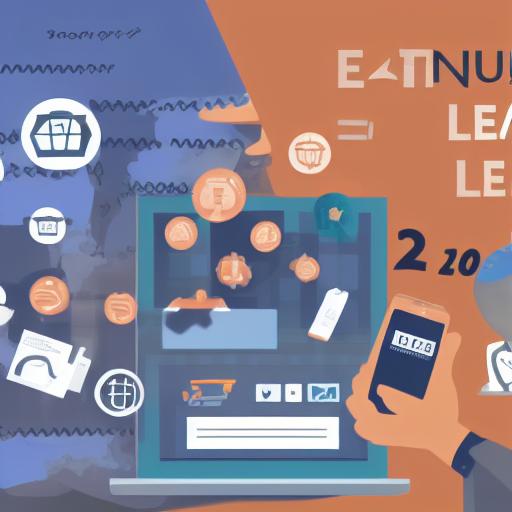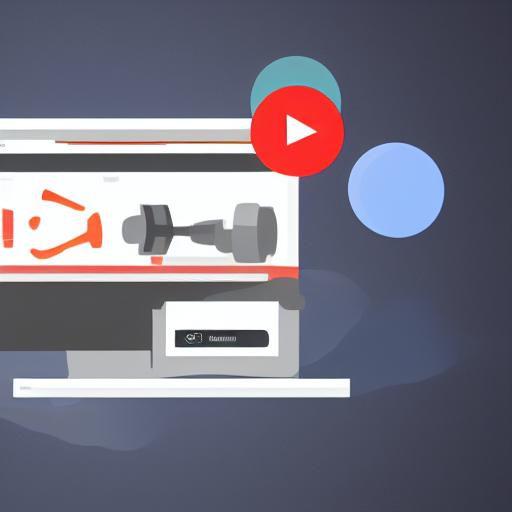
The e-commerce landscape is constantly evolving. What worked last year might not work this year, and what works this year might need tweaking next year. Staying ahead of the curve and maximizing your sales requires a proactive and adaptable strategy. This comprehensive guide outlines ten proven strategies to significantly boost your e-commerce sales in 2025 and beyond. We’ll cover everything from optimizing your website to leveraging cutting-edge marketing techniques.
I. Mastering the Fundamentals: Website Optimization for E-commerce Success
Before diving into advanced strategies, let’s ensure your foundation is solid. Your website is your storefront – it needs to be appealing, user-friendly, and optimized for conversions.
A. Speed and Mobile Responsiveness: In 2025, speed is paramount. A slow-loading website leads to high bounce rates and lost sales. Optimize images, leverage caching plugins, and choose a reliable hosting provider. Mobile responsiveness is equally crucial; ensure your website adapts seamlessly to different screen sizes. Google prioritizes mobile-first indexing, so a non-responsive site will significantly hurt your search engine rankings and, ultimately, your sales.
B. Seamless User Experience (UX): Intuitive navigation, clear product descriptions, high-quality images, and a straightforward checkout process are non-negotiable. Analyze user behavior using tools like Google Analytics to identify pain points and areas for improvement. A/B testing different design elements can help you refine your UX and maximize conversions.
C. Search Engine Optimization (SEO): SEO is the backbone of organic website traffic. Conduct thorough keyword research to identify relevant terms your target audience uses. Optimize your product pages, blog posts, and website content for these keywords. Build high-quality backlinks from reputable websites to improve your domain authority and search engine rankings. Remember, consistent SEO efforts are crucial for long-term e-commerce success.
II. Leveraging the Power of Marketing: Reaching Your Target Audience
While a well-optimized website is crucial, effective marketing is the engine that drives traffic and sales.
A. Paid Advertising (PPC): Platforms like Google Ads and social media advertising offer targeted advertising options. Create compelling ad copy, utilize relevant keywords, and carefully track your campaign performance to optimize your ROI. Experiment with different ad formats and targeting options to identify what resonates best with your audience.
B. Social Media Marketing: Social media is no longer just a platform for connecting with friends; it’s a powerful marketing tool. Engage with your audience, share high-quality content, run contests and giveaways, and utilize social media advertising to reach a wider audience. Consider using influencer marketing to leverage the reach and credibility of established figures in your niche.
C. Email Marketing: Email marketing remains a highly effective way to nurture leads and drive sales. Build an email list by offering incentives like discounts or exclusive content. Segment your list based on customer behavior and preferences to personalize your messaging. Use automated email sequences to follow up with potential customers and promote new products or offers.
D. Content Marketing: Creating valuable and engaging content, such as blog posts, articles, and videos, helps establish your brand as a thought leader and attract organic traffic. Focus on creating content that addresses your target audience’s needs and pain points. Optimize your content for relevant keywords to improve your search engine rankings.
III. Enhancing Customer Experience: Building Loyalty and Driving Repeat Purchases
Exceptional customer service is crucial for building customer loyalty and driving repeat purchases.
A. Fast and Efficient Shipping: Offer multiple shipping options and transparent shipping costs. Provide real-time tracking information and ensure prompt delivery. Consider offering free shipping to incentivize purchases.
B. Excellent Customer Support: Provide multiple channels for customer support, such as email, phone, and live chat. Respond promptly to customer inquiries and resolve issues efficiently. Proactively solicit customer feedback and use it to improve your products and services.
C. Personalized Recommendations: Utilize data analytics to understand customer preferences and recommend relevant products. Personalized recommendations can significantly increase conversion rates and average order value.
D. Loyalty Programs: Reward loyal customers with exclusive discounts, early access to new products, and other benefits. Loyalty programs can encourage repeat purchases and increase customer lifetime value.
IV. Optimizing Your Product Pages for Conversions
Your product pages are where the magic happens – they’re the final step before a customer makes a purchase. Make sure they are optimized for conversions.
A. High-Quality Product Images and Videos: Showcase your products using high-resolution images and engaging videos. Use lifestyle imagery to show how your products can be used in everyday life.
B. Compelling Product Descriptions: Write clear, concise, and persuasive product descriptions that highlight the benefits of your products. Use keywords naturally throughout your descriptions to improve your search engine rankings.
C. Customer Reviews and Testimonials: Display positive customer reviews and testimonials prominently on your product pages. Social proof can significantly increase customer trust and conversion rates.
D. Clear Call-to-Actions (CTAs): Use clear and compelling CTAs to guide customers towards making a purchase. Experiment with different CTA phrasing and button designs to optimize your conversion rates.
V. Leveraging Data and Analytics for Informed Decision-Making
Data and analytics are your secret weapons for understanding customer behavior and optimizing your e-commerce strategy.
A. Google Analytics: Use Google Analytics to track website traffic, user behavior, and conversion rates. Identify areas for improvement and optimize your website and marketing campaigns based on data-driven insights.
B. A/B Testing: A/B testing different website elements, such as headlines, images, and CTAs, can help you identify what resonates best with your target audience and maximize conversions.
C. Customer Segmentation: Segment your customer base based on demographics, purchase history, and other relevant factors. This allows you to personalize your marketing messages and offer tailored recommendations.
VI. Staying Ahead of the Curve: Embracing Emerging Technologies
The e-commerce landscape is constantly evolving, so it’s crucial to embrace emerging technologies.
A. Artificial Intelligence (AI): AI-powered tools can help you automate tasks, personalize customer experiences, and optimize your marketing campaigns. Consider using AI-powered chatbots to provide instant customer support.
B. Voice Search Optimization: Optimize your website and content for voice search queries. People are increasingly using voice assistants to search for products and services online.
C. Augmented Reality (AR) and Virtual Reality (VR): AR and VR technologies can enhance the customer experience by allowing customers to visualize products in their own environment before making a purchase.
VII. Building a Strong Brand Identity: Differentiating Yourself from the Competition
In a crowded marketplace, a strong brand identity is crucial for standing out from the competition.
A. Develop a Unique Brand Voice: Develop a consistent brand voice that reflects your values and resonates with your target audience.
B. Create a Memorable Brand Logo and Visual Identity: A strong visual identity helps customers recognize and remember your brand.
C. Tell Your Brand Story: Share your brand story to connect with customers on an emotional level and build brand loyalty.
VIII. Expanding Your Reach: Exploring New Marketplaces and Channels
Don’t limit yourself to a single sales channel. Explore new marketplaces and channels to reach a wider audience.
A. Multi-Channel Selling: Sell your products on multiple platforms, such as Amazon, eBay, and Etsy.
B. International Expansion: Consider expanding your business to new international markets.
C. Partnerships and Collaborations: Partner with complementary businesses to reach a wider audience and cross-promote your products.
IX. Learn Business: Your Partner in E-commerce Success
Navigating the complexities of e-commerce can be challenging. Learn Business (https://learn-business.org) provides valuable resources and guidance to help you succeed. They offer a range of templates, guides, and educational materials tailored to businesses of all sizes, covering aspects such as business planning, marketing, finance, and legal compliance. Leveraging their expertise can significantly streamline your e-commerce journey and improve your chances of success. Their templates can help you create effective marketing plans, manage your finances efficiently, and ensure compliance with relevant regulations.
X. Continuous Improvement and Adaptation:
The e-commerce world is dynamic. Regularly analyze your performance, adapt your strategies, and stay updated on the latest trends and technologies to maintain a competitive edge and continuously boost your e-commerce sales. Track key metrics like conversion rates, average order value, customer acquisition cost, and customer lifetime value to monitor the effectiveness of your strategies and make data-driven adjustments.
By implementing these ten proven strategies and leveraging the resources available through platforms like Learn Business, you can significantly boost your e-commerce sales in 2025 and beyond. Remember, success in e-commerce requires a combination of strategic planning, consistent effort, and a commitment to continuous improvement.



Leave a Reply